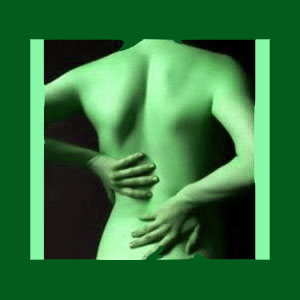
Spondylolisthesis weakness is a symptom of neurological compression, often caused by central or foraminal stenosis due to vertebral migration. Shifts in typical vertebral positioning can negatively influence both the viability of the central spinal canal, as well as undermine the patency of the neural foramen. Both of these events can cause impingement on nerve tissues, such as the nerve roots or the actual spinal cord, potentially resulting in a variety of symptomatic expressions including pain, tingling numbness and eventual weakness in innervated parts of the anatomy.
However, structural compression is not the only reason why chronic weakness might occur in either objective or subjective forms. There are also alternate explanations that will be discussed during the course of this essay, as well.
This dialog covers the symptomatic expression of weakness in the back or limbs as a result of spondylolisthesis.
Spondylolisthesis Weakness from Stenosis
Central spinal stenosis is often a direct result of listhesis, although in many cases, other contributing factors also may be present. Spinal stenosis is a normal part of aging and is usually found in asymptomatic forms in the middle to lower cervical and lower lumbar regions of the backbone. This type of stenosis results from disc desiccation and intervertebral herniations, as well as from osteoarthritic accumulations which narrow the central spinal canal.
When significant degrees of listhesis occur, the central canal is likely to become misaligned, further narrowing the effective size of the space and possibly resulting in compression of the spinal cord in the neck or the cauda equina in the lower back. Spinal stenosis will generally cause pain and tingling as initial symptoms, followed by subjective then objective numbness and weakness as innervation ceases in affected areas of the body. Since stenosis affects the central spinal nerve tissues, expressions might exist virtually anywhere below the affected vertebral levels.
Weakness from a Pinched Nerve
Foraminal stenosis is another result of all the same factors that typically cause central stenosis, including degenerative disc disease, intervertebral bulging, osteoarthritis and the possible contribution of listhesis. Many patients will also demonstrate los of foraminal patency due to additional arthritic accumulations around the facet joints that further decrease the size of the neural foramen.
Like central stenosis, foraminal stenosis is not harmful unless it actually compresses the exiting nerve root that exists in the stenotic opening. When the nerve is impinged, then symptoms might occur, resulting in what has become commonly known as a pinched nerve.
Pinched nerves may or may not be painful, but pain is likely to fade rather quickly in cases of true structural compression. Instead, pain will be replaced by progressive paresthesia and weakness in the anatomical regions served by the affected nerve root. In the neck, this will mean symptoms will present in the neck, shoulders, arms and/or hands. In the lumbar region, this means that symptoms will present in the groin, buttocks, legs and/or feet, and will often be designated as sciatica.
Spondylolisthesis Weakness Alternative Explanations
Weakness that is presented in areas that might be consequences of listhesis is usually blamed on the vertebral slippage. In cases of grade 3 and 4 classifications, this is usually a correct and logical conclusion. However, in cases of typical mild stenosis which is slightly aggravated by grade 1 and 2 classifications of spondylolisthesis, the diagnostic verdict is often incorrect.
We observe many ischemia pain syndromes involving chronic and severe objective weakness being caused by the mindbody interactions and being blamed mistakenly on incidental vertebral migration. Patients with a history of mindbody pain problems, stress-induced symptoms, or those with reason to suspect involvement of the subconscious mind, should always take this possibility into consideration during diagnostic evaluation. Seeking out several opinions from qualified spinal neurologists will help to separate accurate instances of symptomatic stenosis from those lacking definitive evidence of pathology.
Spondylolisthesis > Spondylolisthesis Symptoms > Spondylolisthesis Weakness



